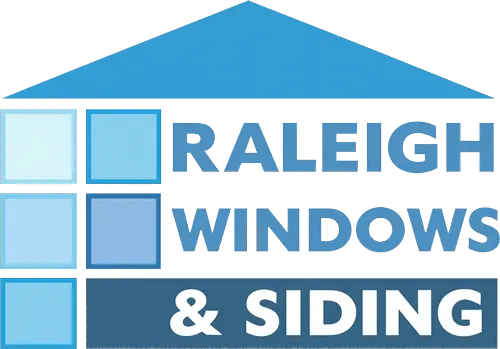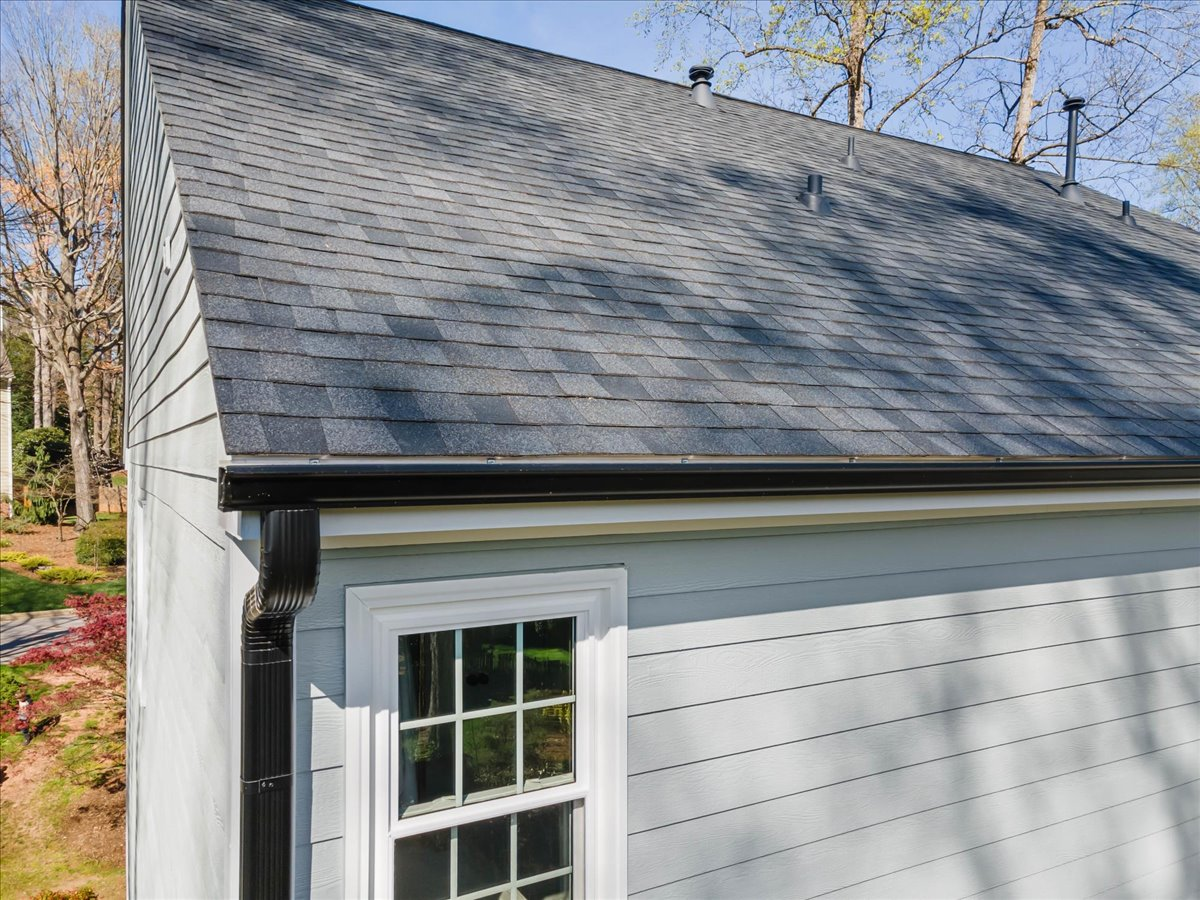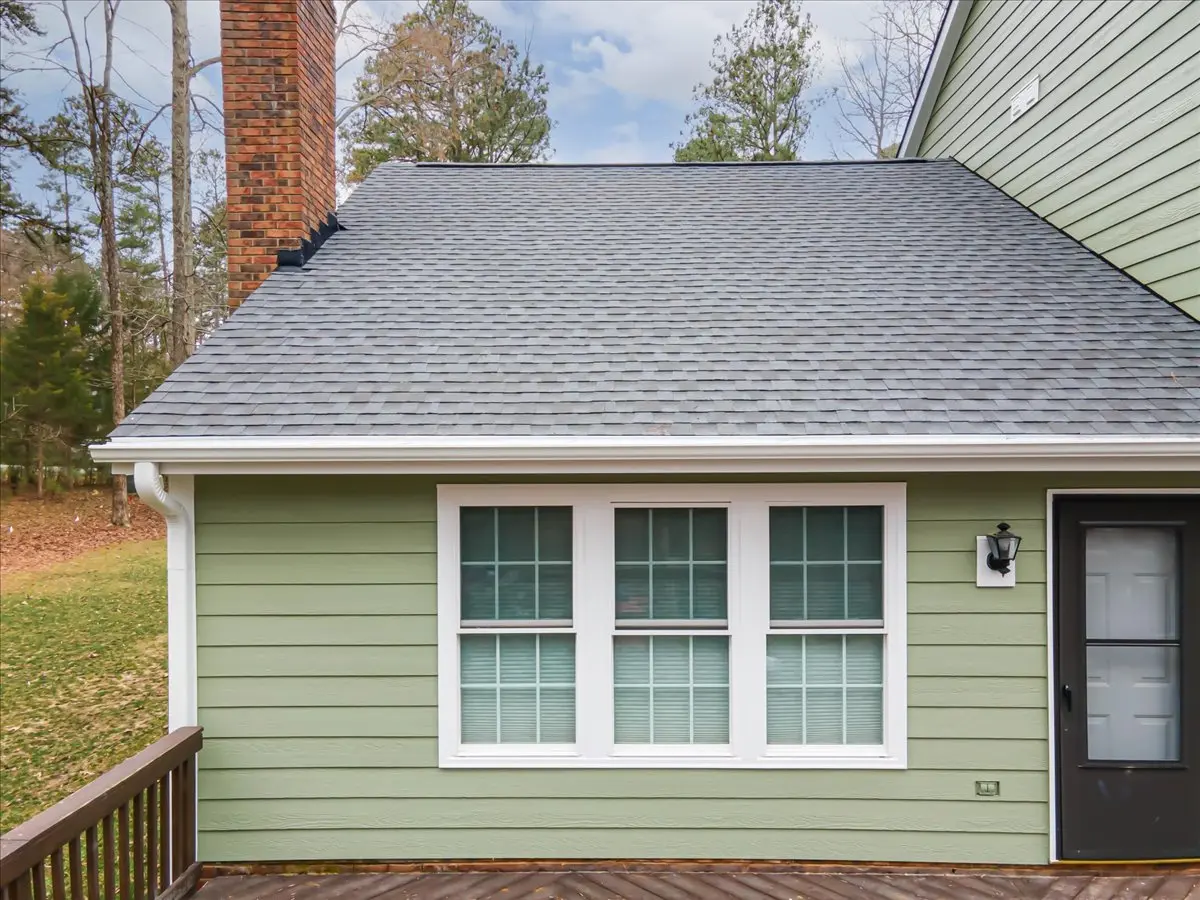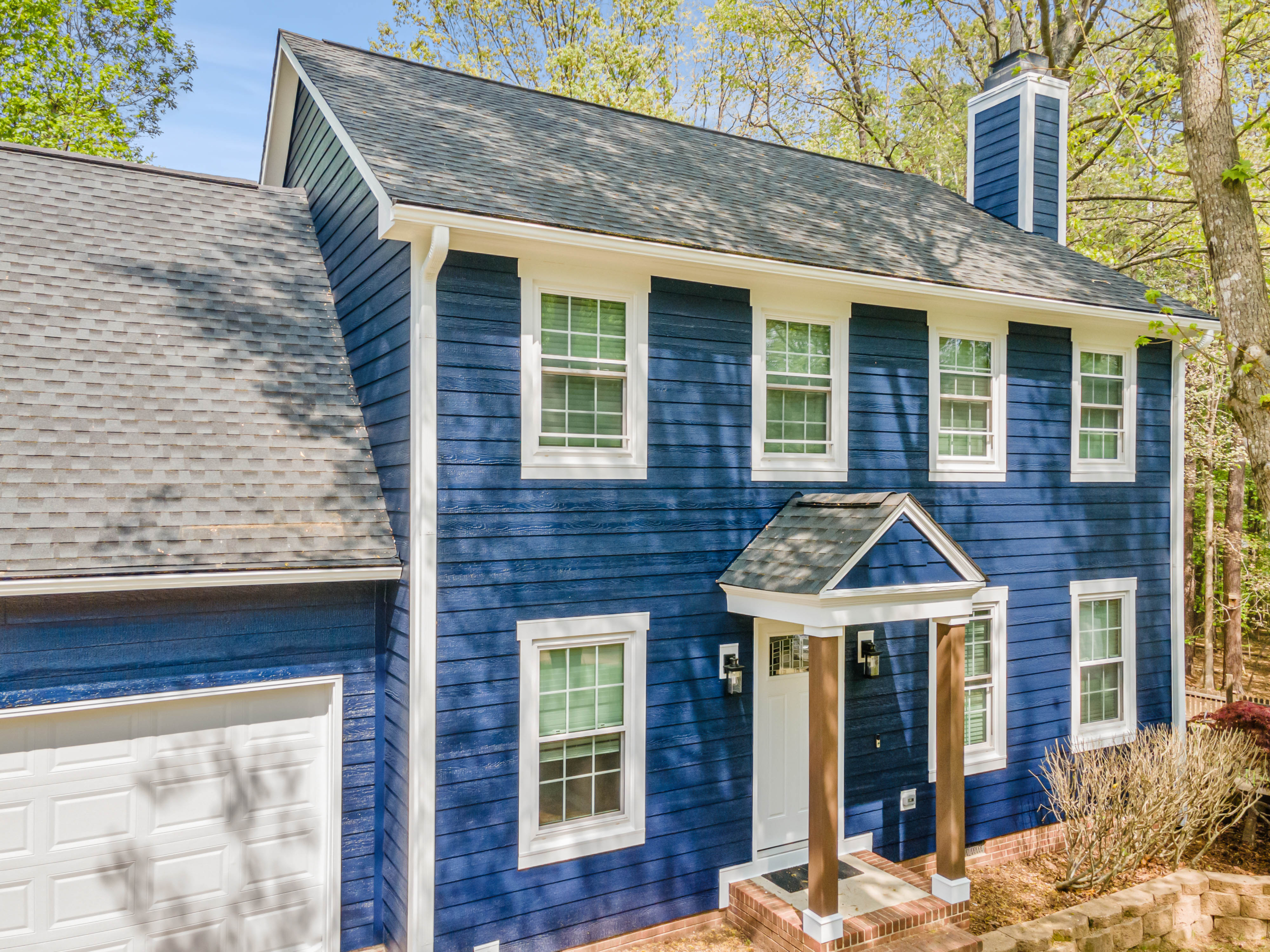When comparing exterior siding options, the decision often comes down to fiber cement vs vinyl. Both are among the most widely used siding materials in the U.S., each offering unique strengths and considerations. As homeowners look for siding that stands up to North Carolina’s changing weather, it’s essential to understand how these materials differ when it comes to maintenance needs, upfront investment, and long-term sustainability.
Fiber cement siding, especially from industry leaders like James Hardie, is known for its exceptional strength, fire resistance, and wood-like aesthetic. Vinyl siding, on the other hand, offers affordability and an impressive range of color options. With advancements in manufacturing, both options now deliver more durability and design flexibility than ever before.
This complete guide breaks down fiber cement vs. vinyl siding, including the latest data, innovations, and expert recommendations to help you choose the right fit for your home. For professional guidance or to explore high-quality siding options, visit Raleigh Windows & Siding.
Fiber Cement and Vinyl Siding: Core Overview
Before diving deeper into fiber cement vs vinyl siding, it’s helpful to understand what each material is made of and how it functions as part of your home’s exterior. Both are widely used across the country, but they offer distinct features and advantages. By knowing how fiber cement and vinyl siding differ, homeowners can make more confident decisions about which material best suits their climate, aesthetic preferences, and maintenance expectations.
What is Fiber Cement Siding?
Fiber cement siding is a high-performance, composite material made from cement, sand, water, and cellulose fibers. This combination is cured under pressure to create an exceptionally strong, stable product that resists warping, swelling, and weather-related damage. Because it is non-combustible, fiber cement is one of the safest siding materials available, offering peace of mind in areas prone to fire risks. Leading manufacturers like James Hardie have refined fiber cement technology to improve aesthetics, sustainability, and long-term durability—making it one of the top choices for homeowners today. Learn more about James Hardie siding.
What is Vinyl Siding?
Vinyl siding is made from PVC (polyvinyl chloride), a lightweight, flexible plastic known for its affordability and ease of installation. Its plastic-based composition allows it to resist rot and moisture, though it may be more susceptible to cracking, warping, or fading over time—especially in extreme heat or cold. Vinyl siding remains a common option thanks to its broad color selection, low upfront cost, and minimal maintenance requirements, making it a popular choice for budget-conscious homeowners.
Durability and Weather Performance: Fiber Cement vs Vinyl Siding
When evaluating fiber cement vs vinyl siding, durability is one of the most important factors. A siding material must stand up to harsh weather, seasonal changes, and environmental threats to protect your home for years to come. Understanding how each material reacts to moisture, heat, fire, pests, and impact can help you determine which one offers the best long-term performance for your region.
Resistance to Severe Weather
Fiber cement siding is engineered to withstand some of the toughest weather conditions, from heavy rain to hurricane-force winds. Its density and structural integrity prevent warping, cracking, or melting in extreme temperatures. Vinyl siding performs well in mild climates, but in severe storms or high heat, it may crack, ripple, or detach under pressure. When comparing fiber cement vs vinyl siding in storm-prone regions, fiber cement consistently proves more resilient.
Fire Resistance
One of fiber cement’s greatest advantages is its non-combustible nature. Products like James Hardie fiber cement siding carry a Class A fire rating, meaning they do not ignite or contribute to flame spread. Vinyl siding, by contrast, can melt when exposed to high heat and may release fumes during a fire event. For homeowners prioritizing safety or for homes in fire-prone areas, fiber cement provides significantly stronger protection.
Pest and Termite Resistance
Fiber cement siding offers excellent resistance to termites, carpenter ants, and woodpeckers due to its dense, inorganic composition. Vinyl siding also resists pests, but it does not provide the same level of defense against insects or burrowing animals that can exploit gaps behind panels. Fiber cement offers superior long-term peace of mind against most pest threats.
Mold, Mildew, and Moisture Concerns
Fiber cement’s heavy, non-porous construction helps prevent moisture penetration, making it less susceptible to mold and mildew. Vinyl siding itself does not absorb moisture, but improper installation can trap water behind the panels, leading to hidden issues such as rot, mold, or mildew in the home’s sheathing. Professional installation is essential for both materials and can help reduce these risks for vinyl.
Aesthetics and Curb Appeal of Fiber Cement vs Vinyl Siding
A home’s siding greatly influences its character and curb appeal. When considering fiber cement vs vinyl, many homeowners look at color variety, texture, and architectural compatibility to ensure their home reflects the style they envision. Both materials offer attractive choices, but fiber cement often delivers a more refined, high-end appearance.
Color and Style Options
Fiber cement siding offers a rich palette of color and texture options, including smooth, wood-grain, shake, and board-and-batten designs. James Hardie’s ColorPlus® Technology provides long-lasting, baked-on color that resists fading for years. Vinyl siding also offers a wide range of colors and styles, from traditional lap to scalloped designs, though its finishes may not appear as premium as fiber cement.
Appearance on Classic & Victorian-Style Architecture
Fiber cement siding is frequently chosen for traditional, Craftsman, and Victorian-style homes because it closely replicates the look of real wood without the maintenance challenges. Vinyl siding offers design flexibility and can complement both modern and classic architecture, but it may not achieve the same depth, texture, or authenticity as fiber cement in historic or high-end home designs.
Resale Value and Perceived Quality
Homes with fiber cement siding often see higher resale values due to the material’s reputation for durability, beauty, and premium craftsmanship. Vinyl siding offers great value for homeowners on a budget, but is generally perceived as a more economical option. As a result, fiber cement tends to deliver stronger return on investment when upgrading your home’s exterior.
Installation and Maintenance Requirements
Choosing between fiber cement and vinyl siding involves more than just appearance and durability—installation and maintenance play major roles in long-term cost and convenience. Because fiber cement and vinyl siding differ significantly in weight, handling, and upkeep, understanding these requirements helps homeowners plan for the full lifespan of their siding.
Installation Complexity and Weight
Fiber cement siding is heavier and requires specialized tools, safety equipment, and trained installers. Its weight can increase installation time and labor costs compared to vinyl, but proper installation ensures superior performance. Vinyl siding is lightweight, flexible, and easier to install, making it a more cost-effective option for homeowners focused on quick installation and lower upfront labor fees.
Maintenance Differences (Washing, Painting, Caulking)
Vinyl siding requires very little maintenance beyond occasional rinsing to remove dust or mildew. However, it may need to be replaced when it begins to show signs of wear, such as fading, warping, or cracking. Fiber cement siding, is also a low-maintenance option, but may need repainting every 5–15 years, depending on the finish. It also requires periodic caulking around joints and trim to preserve moisture protection. Both materials benefit from yearly inspections, especially after storms.
Workmanship Warranty and Longevity
High-quality fiber cement siding often includes long warranties, such as 30- to 50-year manufacturer guarantees and additional workmanship coverage from certified installers. Vinyl siding warranties vary but typically range from 20 years to lifetime, depending on the grade. Fiber cement usually lasts longer—often 40–70 years—while vinyl averages 20–40 years, depending on climate and quality.
Performance and Energy Efficiency in Fiber Cement vs Vinyl Siding
Energy efficiency is another key factor when comparing fiber cement vs vinyl siding, especially for homeowners seeking better insulation and indoor comfort. While both materials offer benefits, insulated options can significantly influence thermal performance.
Thermal Resistance and Insulation
Fiber cement siding has natural density that provides moderate thermal resistance, helping reduce heat transfer. Insulated vinyl siding, which includes an integrated foam backing, improves energy performance by reducing thermal bridging and increasing R-value. Homeowners seeking stronger energy efficiency may benefit from insulated vinyl or pairing fiber cement with upgraded wall insulation.
Fiber Cement vs Vinyl: Cost Comparison and Value
Budget is often a major consideration in the decision between fiber cement and vinyl siding, and understanding both upfront and long-term costs helps homeowners choose the right investment. While vinyl siding delivers excellent upfront affordability, fiber cement offers long-term advantages that often outweigh the higher initial expense.
Upfront and Long-Term Costs
Vinyl siding generally has a much lower upfront cost, making it a popular choice for budget-friendly exterior upgrades. Fiber cement siding, on the other hand, requires a higher initial investment due to material weight and installation complexity, but its durability and longevity often provide a stronger return on investment over time.
Return on Investment and Resale Value
According to national remodeling data, fiber cement siding consistently ranks as one of the top home improvement projects in terms of ROI. Its durability, appearance, and premium look often increase a home’s resale value. Vinyl siding’s primary benefit is affordability, offering solid performance with lower upfront costs—ideal for homeowners planning short-term ownership or budget-conscious renovations.
Which Siding Is Right for Your Home: Why We Recommend Fiber Cement
After comparing fiber cement vs vinyl siding across key categories—durability, weather performance, installation, maintenance, aesthetics, and value—fiber cement emerges as the superior choice for most homeowners seeking long-lasting protection and a premium finish. It provides stronger durability, better fire and pest resistance, higher curb appeal, and more reliable long-term value.
Below is a simplified comparison of major features:
- Durability: Fiber cement excels in extreme weather and impact resistance.
- Aesthetics: Fiber Cement offers more authentic wood-like textures and premium finishes.
- Maintenance: Vinyl requires less routine care, but fiber cement provides better longevity.
- Environmental Impact: Fiber cement is more sustainable and fire-safe.
- Warranty: Fiber cement typically offers longer manufacturer warranties.
For these reasons, Raleigh Windows & Siding often recommends fiber cement—especially James Hardie—for homeowners looking for superior results and long-term performance.
Get Expert Fiber Cement Siding Installation in Raleigh, NC
Upgrading your home’s exterior is a significant investment, and choosing the right team to install your new siding makes all the difference. Raleigh Windows & Siding has built its reputation on expert craftsmanship, reliable service, and a deep understanding of what local homes need to stay protected year-round. From evaluating fiber cement vs vinyl siding options to helping you choose the ideal color, profile, and finish, our team ensures a smooth, professional experience from start to finish. With decades of experience serving Raleigh and the surrounding areas, we provide siding solutions designed to enhance curb appeal, boost energy efficiency, and stand strong against North Carolina’s climate.
Transform Your Home with Raleigh’s Trusted Siding Professionals
If you’re ready to elevate your home’s exterior with premium materials and expert installation, our siding specialists are here to help. Raleigh Windows & Siding is a preferred remodeler for James Hardie fiber cement siding, offering homeowners access to the industry’s most trusted products backed by exceptional workmanship. Whether you’re replacing aging siding or comparing the benefits of fiber cement vs vinyl siding, our team will guide you through every step with personalized recommendations tailored to your home’s style, budget, and long-term needs. Schedule your siding consultation and explore high-performance options.



